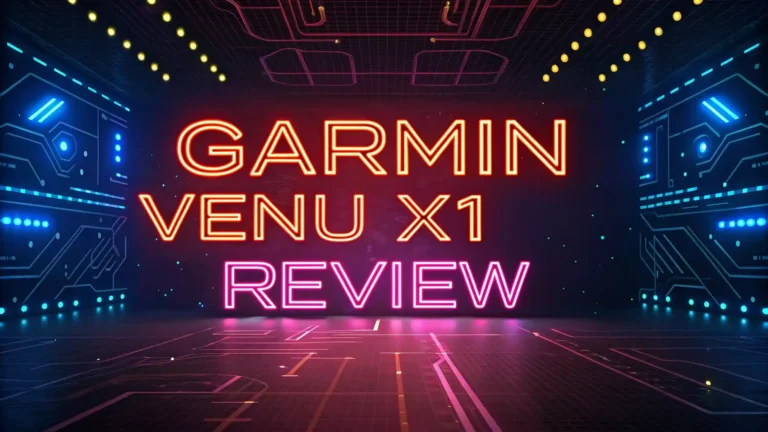3 Best Smart Thermostats for Businesses in 2025
When choosing smart thermostats for your business in 2025, you need devices that balance functionality, reliability, and cost savings. From Wi-Fi-enabled models like the Amazon Smart Thermostat to feature-rich options like ecobee’s Smart Thermostat Essential and Premium, each offers unique benefits—from adaptive scheduling to smart sensors. These devices aren’t just about comfort; they can markedly cut energy bills by optimizing heating and cooling through advanced algorithms and occupancy detection. But which one aligns best with your needs? Let’s explore that next.
Amazon Smart Thermostat
- Smart upgrade - Amazon Smart Thermostat is an easy way to switch from a traditional thermostat and help reduce energy usage.
- Create comfort zones throughout your home by using select Echo devices or Amazon Smart Air Quality Monitor to automatically adjust heating and cooling based on...
- Save money - After purchase, Amazon will send you an email with details about rebates that may be available from energy providers in your area. Explore rebates...
The Amazon Smart Thermostat is a good choice if you want a simple and energy-friendly thermostat for your business. It is easy to set up and works well with most 24V HVAC systems like forced air, heat pumps, and radiant boilers. Just make sure your system has a C-wire or you can use a power adapter, because it doesn’t work with high-voltage systems like electric baseboard heat. Built with Honeywell technology, it is ENERGY STAR and ECOLOGO Silver certified, so it uses energy wisely and cares for the environment. The thermostat connects to Wi-Fi on the 2.4 GHz band. You can control it with Alexa voice commands, the app, or on the device itself. This makes it easy to manage your building’s temperature from anywhere.
Best For: Building managers and business owners who want an easy-to-install thermostat that saves energy and works with most 24V systems for a comfortable and efficient environment.
Pros:
- Works with many 24V HVAC systems, including heat pumps and boilers.
- Uses smart features like Hunches and energy dashboards to save energy and keep you comfortable.
- Easy to set up and control with Alexa, the app, or the buttons on the device.
Cons:
- Only works with 2.4 GHz Wi-Fi, which might be slow or less reliable in some places.
- Needs a C-wire or a power adapter; systems without these may need extra wiring.
- Sometimes, the app may glitch or delay, which can affect remote control or schedules.
This thermostat helps keep your building comfortable and saves energy. Its simple design makes it easy to use and set up, whether you are at the site or away.
ecobee Smart Thermostat Essential, Wi-Fi Programmable Thermostat
The ecobee Smart Thermostat Essential is a good choice for small businesses and homeowners. It helps save energy and money. It can cut your heating and cooling bills by up to 23% a year. It works by adjusting the temperature based on your schedule. When you’re away or busy, it still makes sure your place stays comfortable and uses energy wisely. You don’t need a C-wire to install it because it comes with a Power Extender Kit. You can control it easily using a color touchscreen or the app on your phone. It also works with popular smart home systems like Apple HomeKit, Google Assistant, and Amazon Alexa.
This thermostat is best for people who want an easy-to-install device that saves energy and works with most heating and cooling systems.
Pros:
- Saves up to 23% on energy bills each year.
- Works with 85% of heating and cooling systems.
- Easy to install, even if you don’t have a C-wire, thanks to the Power Extender Kit.
- Connects with smart home systems like Apple, Google, and Alexa.
Cons:
- Check if your system is compatible before buying.
- Some parts, like trim kits, are sold separately.
- The touchscreen might be simple compared to more advanced models.
In short, the ecobee Smart Thermostat Essential is a smart way to save energy and stay comfortable. It’s easy to set up and works well with many types of HVAC systems.
Ecobee Smart Thermostat Premium with Smart Sensor
- Save up to 26% per year on heating and cooling costs. ENERGY STAR certified. Included SmartSensor (50 dollar value) adjusts the temperature in the rooms that...
- Built-in air quality monitor alerts you to poor air quality, provides tips on how to improve it, and reminds you when it’s time to change your furnace’s air...
- Premium materials and advanced engineering mean a large, vibrant display with a cinematic interface, a timeless design, and next level occupancy sensing.
Want to keep your business comfy without paying too much for energy? The Ecobee Smart Thermostat Premium with Smart Sensor can help. It can lower your heating and cooling bills by up to 26%. It has an ENERGY STAR badge, which means it’s energy-efficient.
The SmartSensor that comes with it makes sure that important rooms stay cozy. It changes the temperature based on if the room is busy or empty. No more cold or hot spots in your office. The thermostat has a bright LCD screen, checks air quality, and sends alerts if your air isn’t good or if a filter needs changing.
It also has safety features like smoke alarms and alerts for break-ins. This makes it a useful all-in-one device for your workplace.
Best For: Businesses or homeowners who want to save energy and keep key areas comfortable with smart climate control.
Pros:
- Saves up to 26% on heating and cooling bills, with ENERGY STAR approval.
- Uses the SmartSensor to fix hot or cold spots in rooms.
- Has a bright screen, air quality alerts, and safety features for added security.
Cons:
- Installing can be tricky. It might need a professional, especially in older buildings.
- Setting up sensors and features can sometimes be confusing or not work perfectly.
- It might not work with all HVAC systems, and you could need extra wiring or parts.
This device can help your business save money, keep everyone comfortable, and add useful safety features.
Factors to Consider When Choosing Smart Thermostats for Businesses 2025
When selecting a smart thermostat for your business in 2025, you need to make certain it’s compatible with your existing systems, like HVAC or building management software—nobody wants a thermostat that plays hard to get. Energy efficiency features matter too, since saving power isn’t just eco-friendly, but also lowers your bills, especially when temps spike or plunge. Finally, consider integration capabilities, installation requirements, and costs, so you get a system that fits your budget without causing chaos or requiring a rewire of your entire office.
Compatibility With Systems
When you try to install a smart thermostat, make sure it works with your system. Most thermostats need a 24V AC power source. Check your system’s voltage before buying. If the voltage doesn’t match, the thermostat may not work right.
Look for a common C-wire. This wire gives continuous power to your thermostat. If you don’t have a C-wire, you might need a power extender or some extra parts.
Check how your thermostat connects to your HVAC system. Make sure it can work with your control panel and your smart home system. If you want to use Alexa or Google Assistant, see if the thermostat is compatible. This makes sure your new thermostat fits in smoothly and works well.
Energy Efficiency Features
Smart thermostats help businesses save energy and money. They have features that make it easier to use less power. For example, adaptive scheduling changes the temperature based on when people are in a room. If no one is there, the thermostat turns down the heat or cooling. Occupancy sensors detect if a room is in use. They help adjust the temperature so you don’t waste energy on empty spaces. Temperature optimization uses data from past days and the weather outside. It adjusts the settings in real-time to save energy. You can control and check the thermostat from anywhere with remote access. Some models allow you to set limits to prevent the space from getting too hot or too cold. This helps to protect equipment and cut down on energy waste. Many thermostats are certified with ENERGY STAR. These show the device is energy-efficient and good for the environment.
Integration Capabilities
Make sure your smart thermostat works well with your current tech. Look for models that can connect easily to popular systems like Amazon Alexa, Apple HomeKit, and Google Assistant. This way, you can control your thermostat using your voice or apps.
Check if it supports common connection options like Wi-Fi, Bluetooth, or Zigbee. These help link your thermostat with other devices and different hubs around your home or business. Some thermostats let you add extra sensors or devices, so you can set up custom controls for different areas.
See if it offers open APIs or works with third-party apps. These features help you include the thermostat in larger building control systems. Also, look for firmware updates. Regular updates keep your device working well and compatible with new tech standards. This helps your system stay simple and easy to use, not full of tangled wires and confusing setups.
Installation Requirements
Choosing a smart thermostat is about making sure it fits well with your heating and cooling system. First, check if your system has a C-wire. This wire powers many thermostats. If you don’t have a C-wire, look for models that come with a power extender kit. Some thermostats are easy to install and take about 30 to 60 minutes. But if you have a more complex system, like a heat pump or multi-stage system, you might need help from a professional.
Make sure your thermostat works with your system’s features. Double-check that it is compatible with your HVAC system before you buy. Having the right power supply is important. It helps prevent connection issues or malfunctions. Overall, check your wiring and system compatibility to ensure your smart thermostat works smoothly.
Cost and Budgeting
When choosing smart thermostats for your business, it’s important to think about the costs. Prices are usually between $50 and $250. The higher-priced models have extra features, like better sensors and zoning options. These features can make the extra cost worth it.
Installation costs are also a factor. If your system needs new wiring or special setup, expect to pay more. Luckily, some utility companies offer rebates or grants that can help lower these upfront costs.
Think about saving money in the long run too. Smart thermostats can cut your energy bill by $50 to $200 each year. Saving this much can make a big difference over time.
FAQs
How Do Smart Thermostats Integrate With Existing Building Management Systems?
You can integrate smart thermostats with your building management system by connecting via standard communication protocols like BACnet, Modbus, or Wi-Fi, allowing seamless control, data sharing, and automation to improve energy efficiency and operational oversight.
Are Smart Thermostats Suitable for Large Commercial or Industrial Facilities?
You can use smart thermostats in large commercial or industrial facilities, but guarantee they’re scalable and compatible with your systems. They help optimize energy use and improve climate control, making them a practical solution for sizable spaces.
What Cybersecurity Measures Protect Smart Thermostat Data and Controls?
You need to implement strong passwords, enable two-factor authentication, keep firmware updated, and use secure Wi-Fi networks. Regularly monitoring access logs and employing encryption safeguard your smart thermostat data and controls effectively.
How Do Smart Thermostats Adapt to Seasonal Temperature Fluctuations Automatically?
You’ll find that smart thermostats adapt to seasonal changes automatically by learning your schedule, sensing indoor temperatures, and adjusting settings accordingly, ensuring comfort and energy efficiency without manual intervention, even as weather conditions fluctuate regularly.
What Is the Typical Return on Investment Period for Businesses Installing Smart Thermostats?
You might wonder about ROI timeframes for smart thermostats. Typically, you can expect a return within one to three years, depending on your energy savings, installation costs, and system efficiency improvements.

DK is a technology expert who specializes in AI tools, software, and tech gadgets. He writes for How to Tech Info, providing detailed reviews and practical guides. DK helps readers discover the best AI applications, navigate new software, and choose the right tech gadgets.
Last update on 2025-09-03 / Affiliate links / Images from Amazon Product Advertising API This site is a participant in the Amazon Services LLC Associates Program, an affiliate advertising program designed to provide a means for sites to earn advertising fees by advertising and linking to Amazon.com.



